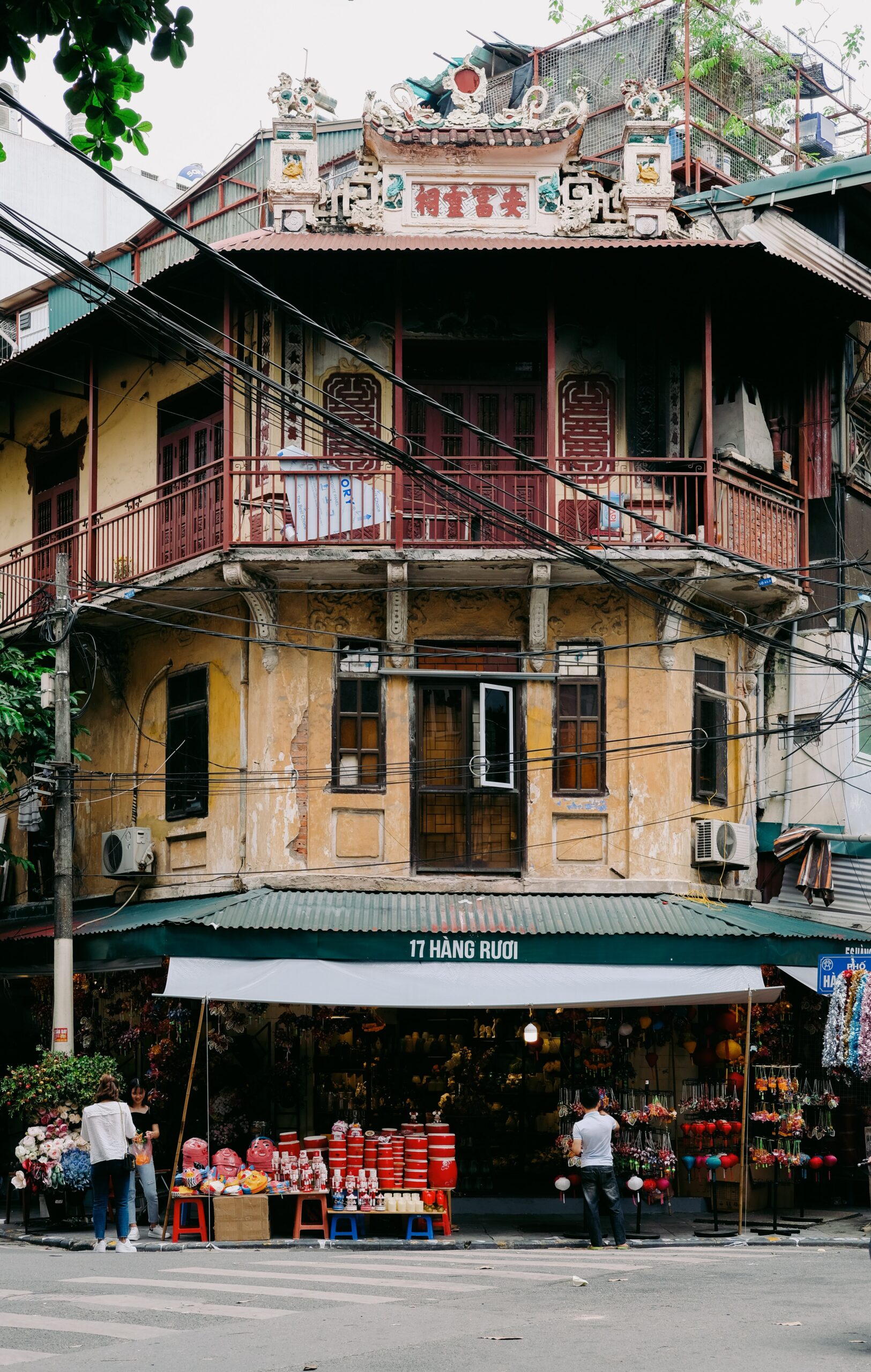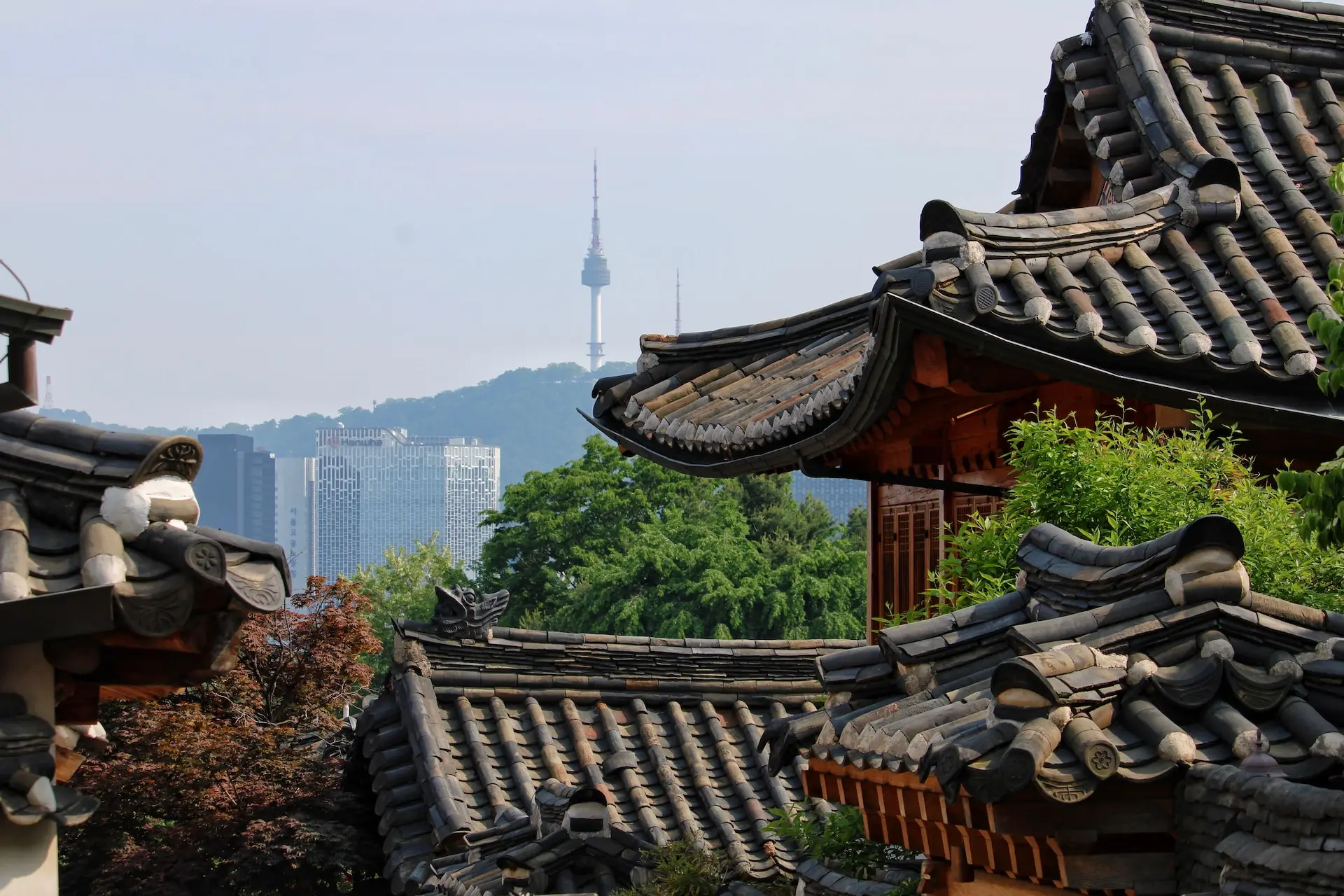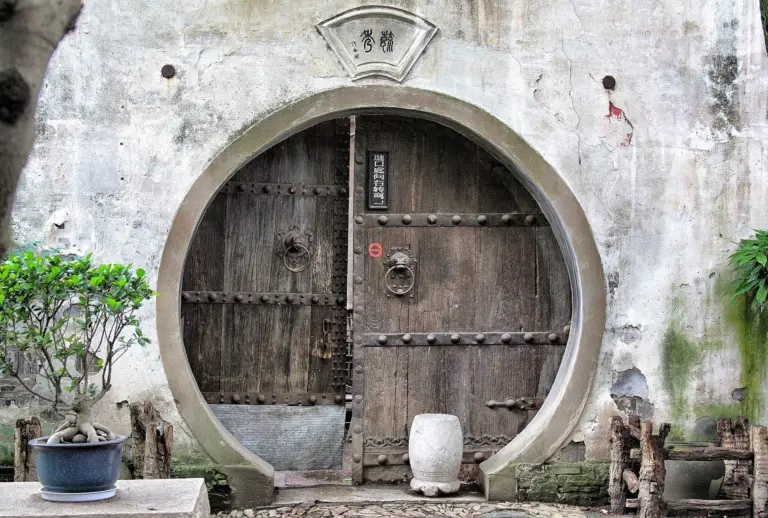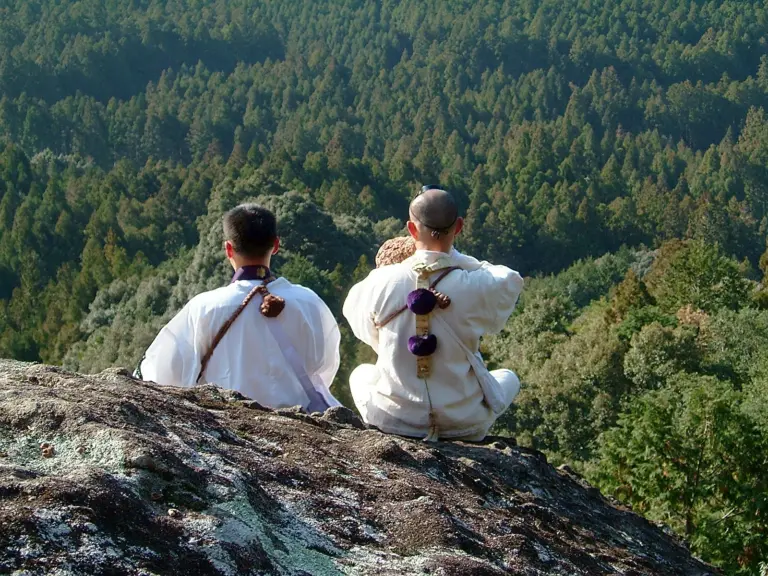The enigmatic Tarot deck is a mystical tool that has fascinated humanity for centuries.
At its heart, the Tarot deck comprises 78 cards, each imbued with its own imagery, symbolism, and story. These cards are divided into two main categories: the Major Arcana, consisting of 22 cards that represent significant life themes, and the Minor Arcana, which depicts the day-to-day aspects of life through the remaining 56 cards.
The Major Arcana, in particular, serves as a profound narrative framework, guiding us through the archetypal stages of human experience and spiritual evolution.
Central to this narrative is The Fool’s Journey, a metaphorical voyage that mirrors our own journey through life. This journey is not merely a sequence of events but a deeply integrated process of transformation that can be understood through various lenses—psychological, spiritual, heroic, life cycle, and mystical.
In this article, we integrate these interpretations to offer a comprehensive understanding of The Fool’s Journey.
Table of Contents
Toggle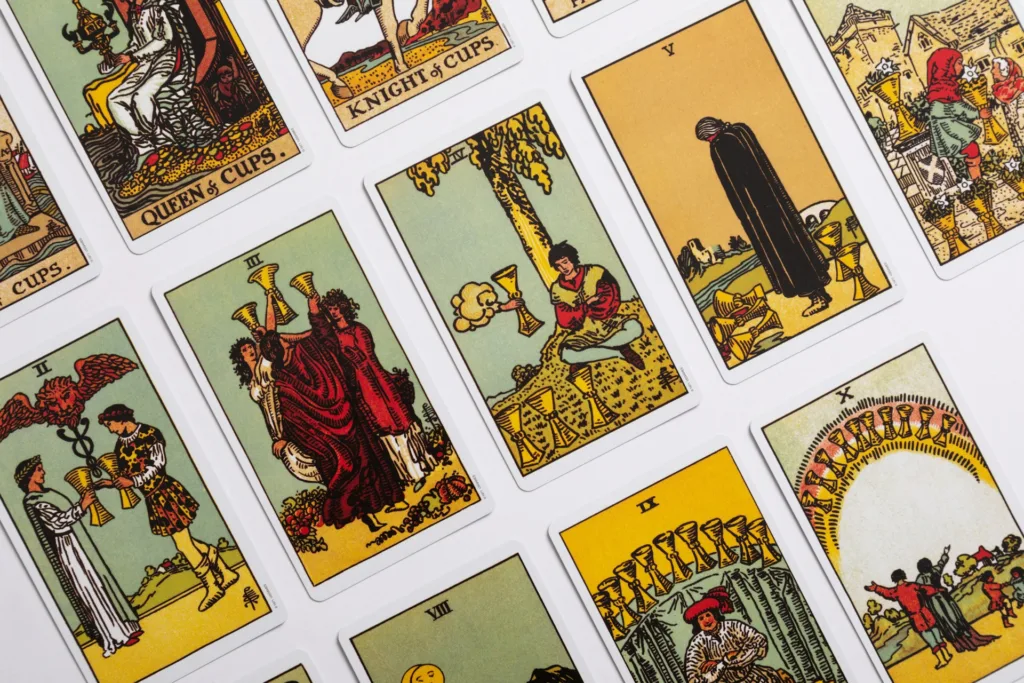
What is the Fool's Journey?
Beginning with The Fool, card zero, the journey unfolds through the sequential encounters with the remaining 21 archetypes/arcana.
Each card of the Major Arcana represents a distinct challenge that The Fool, embodying each of us, must navigate on the path to self-discovery and ultimately, enlightenment. And as stated earlier, we are viewing it in different perspectives to fully capture and encapsulate the essence of the Fool’s Journey:
- From a psychological perspective, The Fool’s Journey reflects the process of individuation and the unfolding of the self.
- Spiritually, it represents the soul’s quest for meaning and connection with the divine.
- Through the lens of the hero’s journey, it echoes the universal narrative of adventure, trial, and return.
- As a cycle of life, it mirrors our passage through key stages and milestones.
- Mystically, it offers insights into the alchemical process of transmuting the lead of our lower nature into the gold of spiritual awakening.
The Beginning - The Call to Adventure
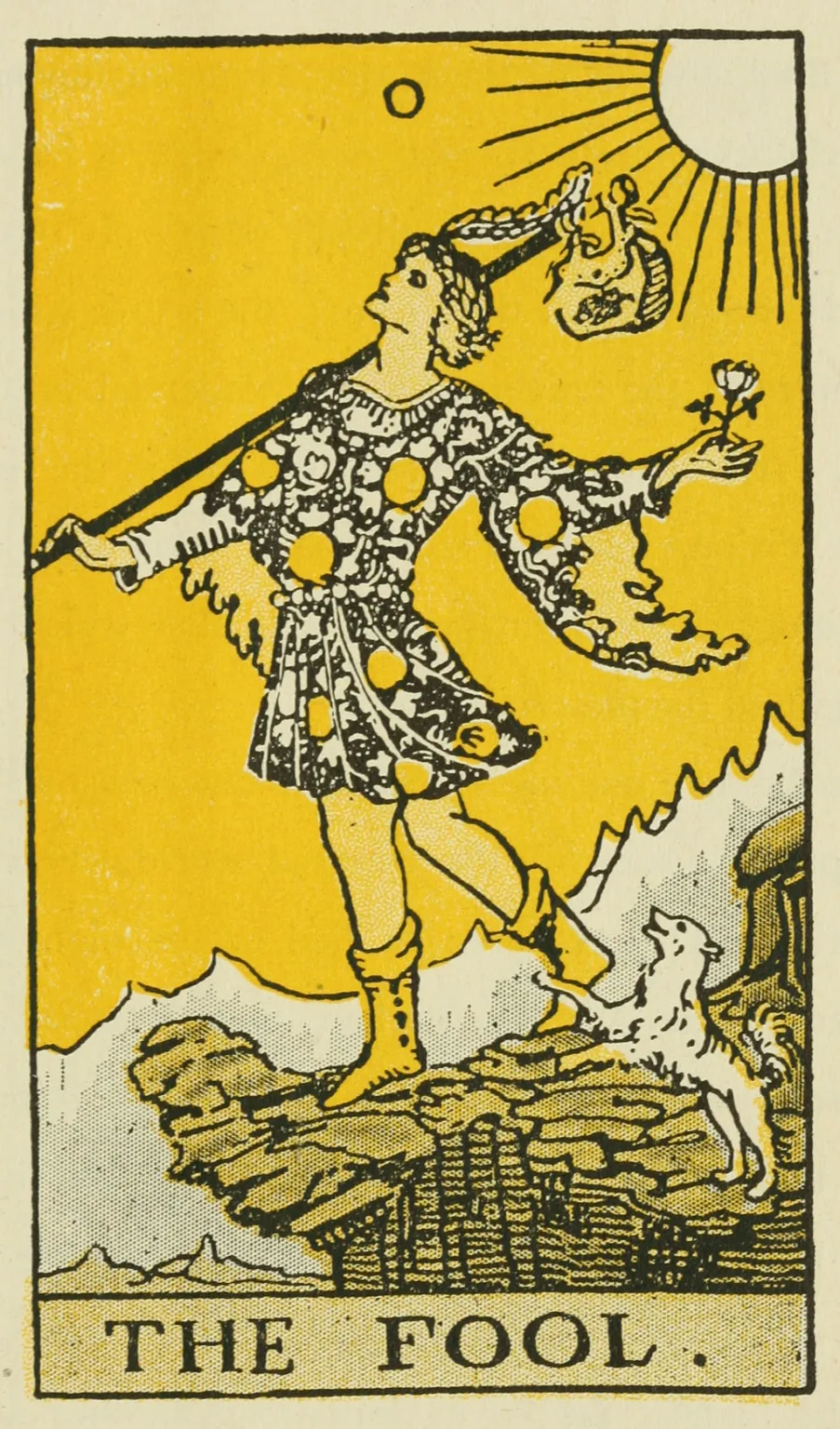
0 - The Fool
In the ethereal dawn of existence, where potential knows no bounds, we find ourselves in the company of The Fool, a symbol not merely of innocence but of the profound precipice of beginnings. With a single step, this emblematic figure ventures forth into the vast unknown, embodying the essence of every soul at the outset of a great journey. The Fool carries little—a satchel of experiences yet to be unfurled and a white rose of pure intention—standing on the edge of a cliff, ready to take a leap of faith.
This journey of The Fool, while outwardly a path through varied landscapes of experience, mirrors an inward trek across the terrains of the self. It is a quest of discovery, where the initial spark of divine consciousness illuminates the uncharted territories of our psyche. The Fool’s leap is not just a physical movement but a dive into the depths of the soul, awakening to the spiritual voyage that intertwines with the fabric of life itself.
The Fool’s journey embodies the hero’s call to adventure, a narrative as ancient as time, where each step forward is a confrontation with the self and the world in equal measure. This leap is a rite of passage, marking the transition from the innocence of untested potential to the quest for wisdom and understanding.
The narrative of The Fool is not just a tale of individual exploration but a cosmic dance that connects the microcosm of personal experience with the macrocosm of universal truths. The journey is both a return to and a departure from the source, a spiral path that leads The Fool to discover that the journey and the destination are one and the same.
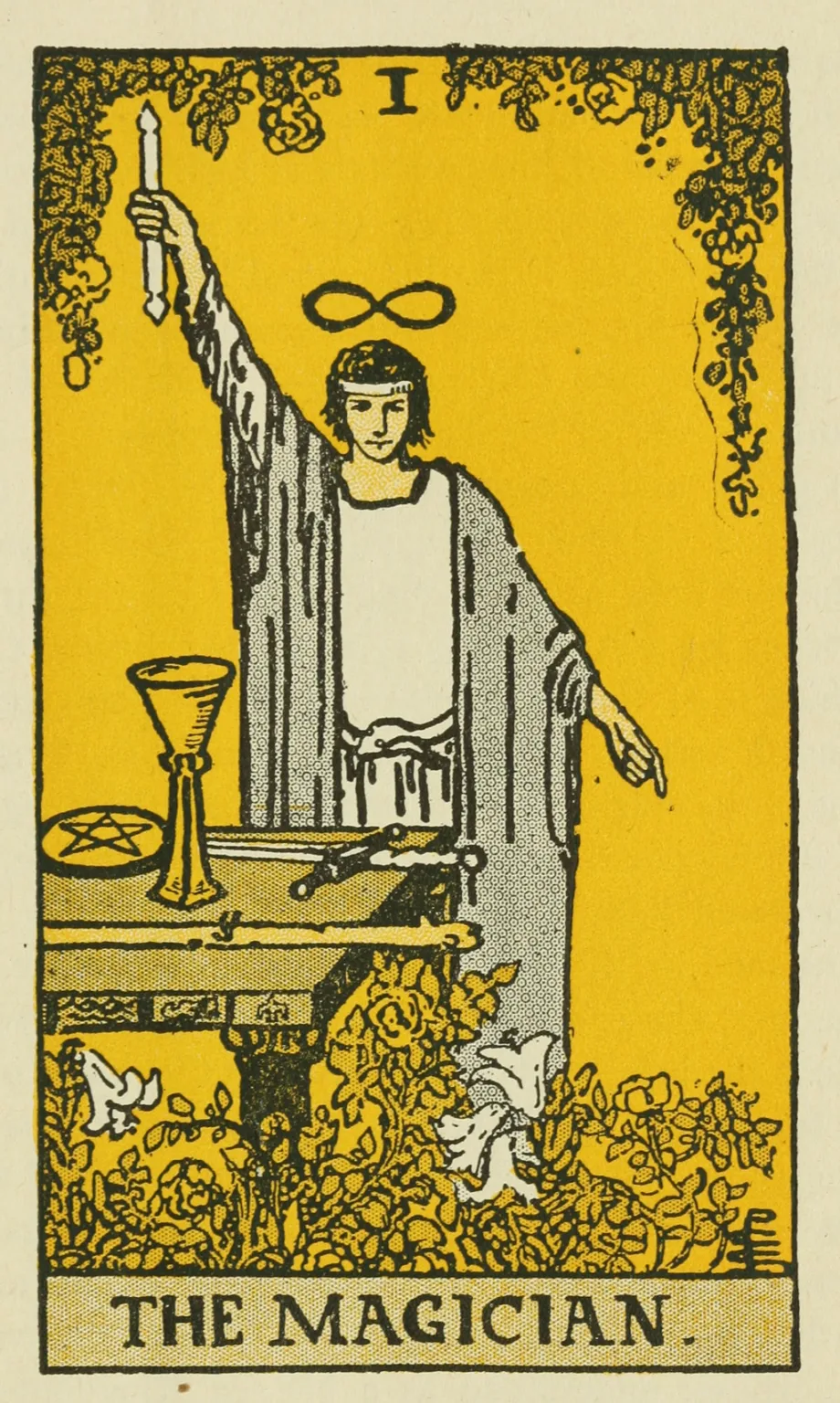
I - The Magician
In the nascent light of The Fool’s journey, the path unfolds to reveal The Magician, a figure of profound command over the elements and the tangible world. Standing confidently, The Magician lays out a table bearing the symbols of the minor arcana—wands, cups, swords, and pentacles—each representing the raw materials of existence: action, emotion, intellect, and the physical. Above, the infinity symbol hovers, a reminder of limitless potential and the eternal flow of energy that connects the material and the spiritual realms.
The encounter with The Magician marks a pivotal moment for The Fool, illuminating the power of intention and the realization that within their grasp lies the ability to shape their destiny. Here, The Fool is introduced to the art of manifestation, learning that the tools for creating one’s reality are always at hand, and that mastery and focus can bring forth wonders. The Magician’s outstretched arm, pointing towards the sky with the other towards the earth, bridges the gap between the divine and the mundane, teaching The Fool the essential lesson of “as above, so below.” This gesture signifies the alignment of will with the divine will, highlighting the interplay between human effort and cosmic order.
The Magician’s presence is a call to action for The Fool, urging them to step into their own power, to recognize their potential to influence their path through clarity of purpose and the deliberate application of their talents. This encounter awakens The Fool to the magic of their own being, to the realization that the external world is a canvas for their inner vision and desires.
In this meeting, The Fool learns a critical aspect of the journey: that while the path ahead is fraught with mystery, they are never without agency. The Magician empowers The Fool with the knowledge that life is not something that merely happens to them but is a dance of creation in which they are active participants. This revelation instills in The Fool a sense of responsibility for their choices and the paths they choose to explore.

II - The High Priestess
Guided by the newfound knowledge of potential from the encounter with The Magician, The Fool’s journey meanders into the quiet, reflective presence of The High Priestess. Poised at the gateway between the known and the unknown, she sits, an embodiment of the deep, intuitive wisdom that lies beyond the surface of our conscious minds. The High Priestess, cloaked in the mystery of the night, invites The Fool to pause and look inward, marking a shift from the active manifestation of The Magician to the realm of introspection.
The High Priestess’s domain is where the seen and unseen weave together, where the moonlight illuminates secrets hidden in the shadow. She holds before her a scroll, a symbol of the sacred knowledge that is accessible only through the journey inward. The pillars that flank her, marked with the letters B and J, stand for Boaz and Jachin, the pillars of Solomon’s Temple, representing duality—severity and mercy, passivity and action, the conscious and the subconscious. Yet, she sits between them, a guide to harmonizing these dual aspects within oneself.
In this sacred space, The Fool learns that true wisdom comes not from external conquests but from the depths of silence and the realms of the unseen. The High Priestess’s tranquil gaze invites a communion with the subconscious, encouraging The Fool to listen to the whispers of their inner voice, to the dreams and intuitions that guide one’s steps on the journey of life. It is here, in the serenity of her presence, that The Fool confronts the mysteries of their own soul, learning that every answer they seek lies within.
The High Priestess does not speak; her wisdom is imparted in the stillness, in the spaces between words, urging The Fool to embrace the quietude and to seek knowledge not through force but through surrender. It is a lesson in the power of the feminine principle, of receptivity, and the strength found in vulnerability. Her appearance on The Fool’s path signifies a moment of profound reflection, of looking beyond the veil of the material world to the rich tapestry of meaning that underpins our existence.
This encounter imbues The Fool’s journey with a depth of understanding that balances the earlier lessons of action and creation. The High Priestess teaches that the journey forward is not only shaped by what we do but also by what we perceive, feel, and believe at the deepest levels of our being. She reminds The Fool that every step taken in the outer world is mirrored by a journey within, into the landscapes of the heart and the soul, where the true mysteries of life are unveiled.

III - The Empress
With the silent wisdom of The High Priestess still echoing in their soul, The Fool advances along their path, carrying with them the light of inner knowledge. This light guides them to the nurturing embrace of The Empress, the lush abundance of nature herself. Surrounded by a verdant landscape, The Empress sits upon her throne, the very embodiment of the Earth Mother, her energy resonating with the cycles of growth and the generative forces of the universe. In her presence, The Fool is enveloped in the warmth of unconditional love, a reminder of the interconnectedness of all life and the nurturing sustenance provided by the earth.
The Empress symbolizes a moment of realization for The Fool—the understanding that creativity and life spring forth from the depths of love and receptivity. Her crown of twelve stars connects her to the cosmic cycles, while the scepter in her hand signals her dominion over the realm of growth. The Empress teaches The Fool about the beauty of creation, not just as an act of bringing forth new life but as an expression of love’s boundless capacity to nurture and sustain.
This encounter teaches The Fool the importance of connecting with the natural world, of understanding life’s rhythms. The Empress encourages a harmonious relationship with the environment, highlighting the necessity of caring and respect for the natural world as extensions of oneself. Here, The Fool learns the value of patience, of gentle care and attention, and how these qualities are essential for the flourishing of all relationships and endeavors.
In the presence of The Empress, The Fool also confronts the concept of abundance, realizing that true wealth is found not in material possessions but in the richness of experiences, relationships, and the joy of creation. It is a lesson in appreciating the beauty that surrounds us, in finding abundance in the simple pleasures of life, and in recognizing the inherent value of nurturing and being nurtured.
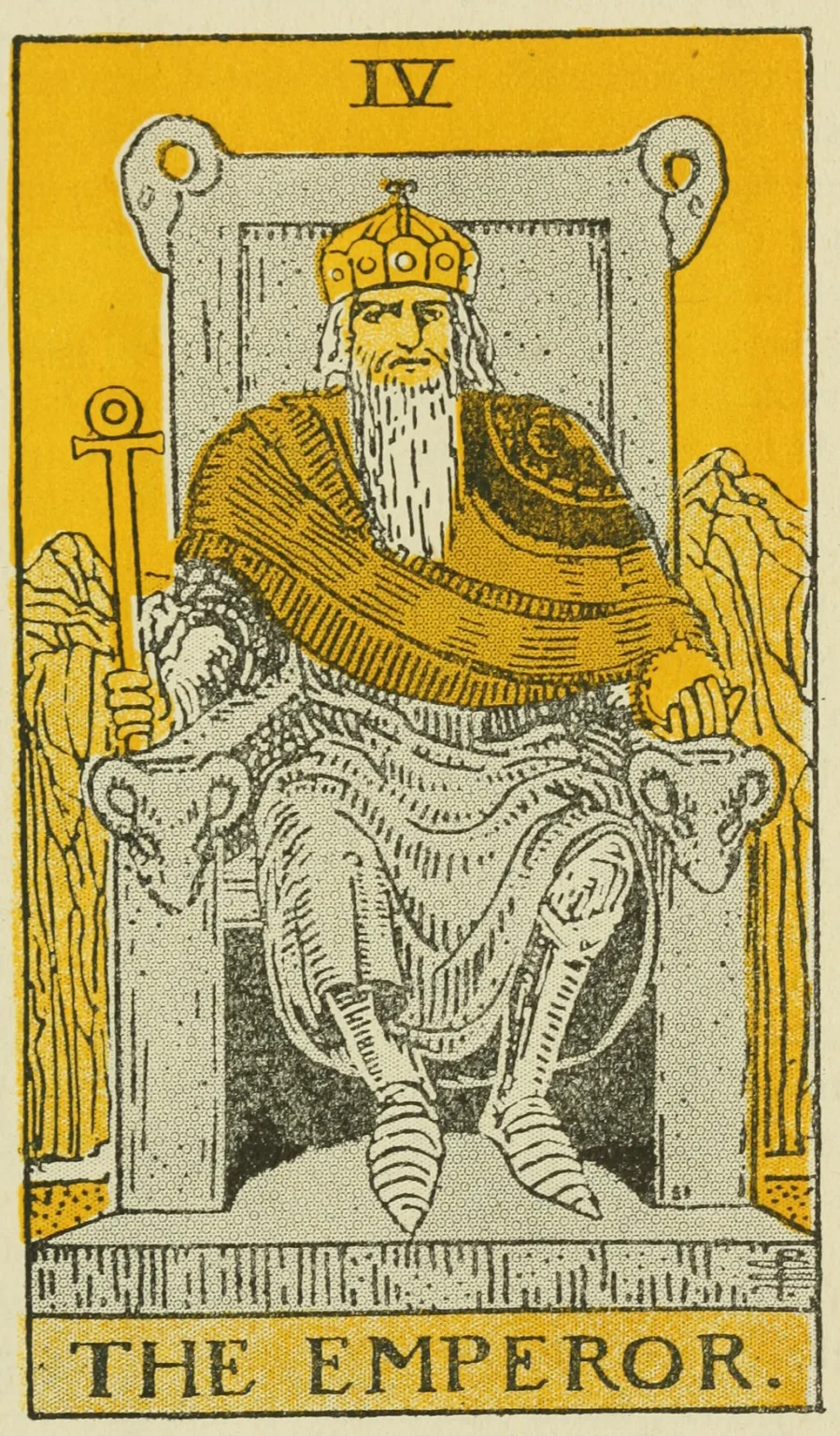
IV - The Emperor
The Fool’s journey winds forward, leading them to the steadfast presence of The Emperor. As they approach, The Fool is met with an aura of authority and paternal guidance. The Emperor sits upon a stony throne, adorned with rams’ heads, symbolizing a commanding view over realms both internal and external. In his hand, he holds an ankh, the ancient symbol of life.
The Emperor represents the power of action over words, the importance of stability, and the establishment of order from chaos. His appearance in The Fool’s journey introduces the concept of rules and boundaries, teaching that freedom truly thrives within a structured environment. It’s here that The Fool learns the value of discipline, the strength found in conviction, and the necessity of establishing a solid foundation upon which dreams and ambitions can be realized.
Through the lens of The Emperor, The Fool begins to understand the significance of leadership—not as a means of control but as a mantle of responsibility to oneself and others. The Emperor embodies the principle of structure as a vehicle for growth, showing that chaos can be harnessed into order, and that leadership is a service rooted in wisdom and compassion.
This encounter imparts to The Fool the realization that their journey is not solitary but interconnected with the journeys of others. The Emperor challenges The Fool to consider their role within the larger community, to embrace the responsibilities that come with power, and to wield that power with fairness and integrity.

V - The Hierophant
The Fool’s path unfolds towards a profound encounter with The Hierophant. Standing as a bridge between the divine and the mundane, The Hierophant is seated between two pillars, symbolizing the balance between opposites and the gateway to deeper knowledge. Cloaked in religious garb, he holds a triple scepter, signifying his spiritual authority and the three worlds he mediates—conscious, subconscious, and superconscious. Before him, two acolytes kneel, representing the passing of traditional wisdom and the importance of spiritual mentorship.
In this moment, The Fool is invited to explore the realms of established beliefs, to understand the value of spiritual traditions and the role they play in shaping personal and collective consciousness. The Hierophant embodies the accumulation of cultural and spiritual wisdom passed down through generations, offering The Fool guidance on the path towards spiritual fulfillment.
This encounter teaches The Fool about the significance of rituals, symbols, and ceremonies—not as rigid dogmas but as vessels for profound spiritual experiences. The Hierophant encourages an appreciation for the communal aspects of spirituality, emphasizing that growth often occurs within the context of a shared journey, where wisdom is both received and imparted.
Moreover, The Hierophant challenges The Fool to discern the difference between external authority and internal guidance, prompting a reflection on personal beliefs and the spiritual values that resonate most deeply within their heart. It is a call to integrate traditional wisdom with personal insight, crafting a spiritual path that honors both the collective heritage and the individual’s unique connection to the divine.
The Middle - The Quest
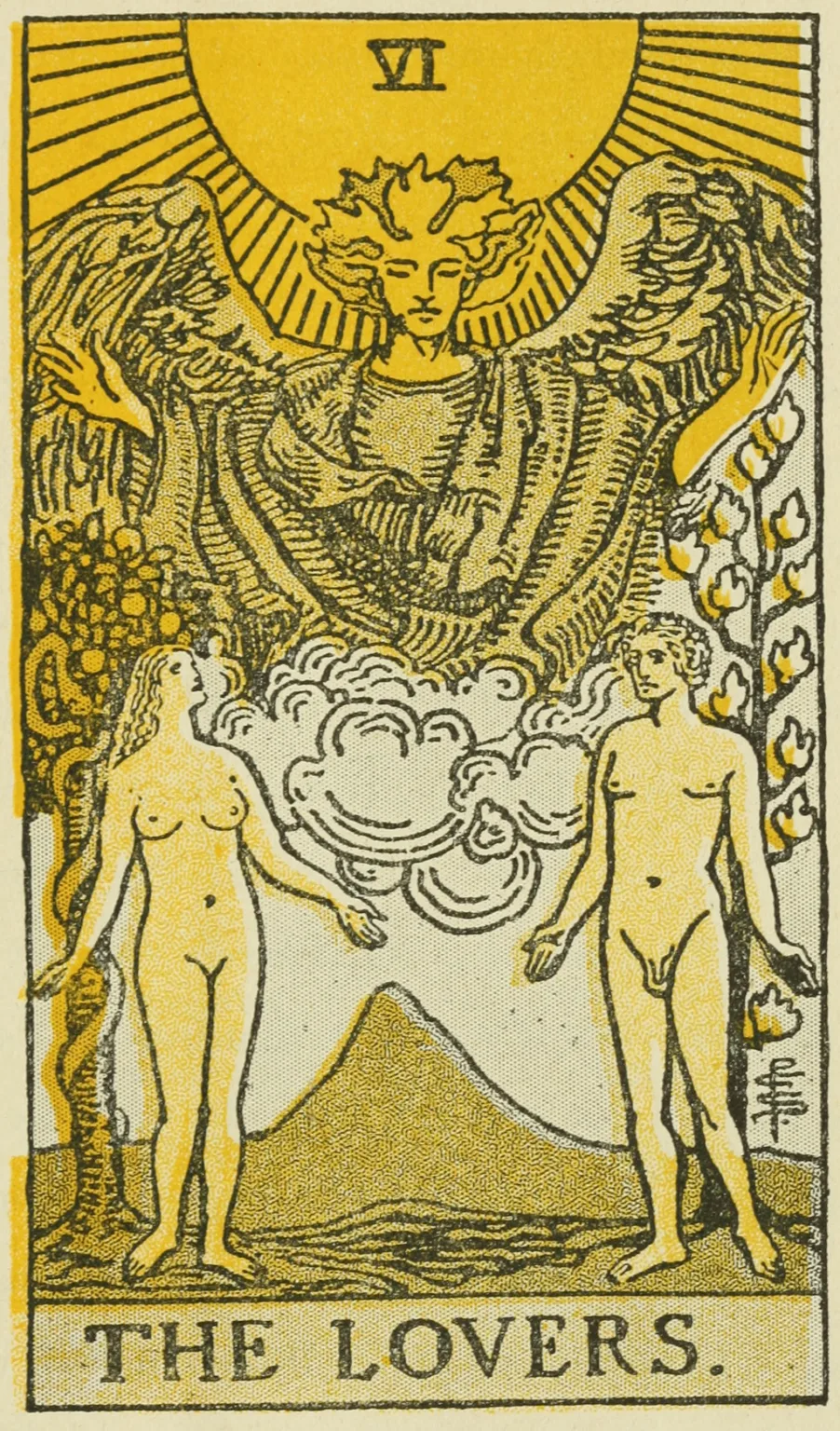
VI - The Lovers
The Fool strides forward, their journey weaving through life’s grand narrative toward a moment of choice and connection represented by The Lovers. Underneath a radiant sun, The Lovers stand in a garden, evocative of the Garden of Eden, symbolizing not just romantic union but the profound choices that define our paths. Above them, an angel—often identified as Raphael, the angel of healing—spreads its wings, blessing their union and signifying divine approval.
This encounter signifies a critical juncture for The Fool, where the concept of choice comes to the forefront of their journey. The Lovers card embodies the dual nature of decision-making—each choice leading to a future replete with its own lessons. It speaks to the inner conflicts that arise when we stand at life’s crossroads, highlighting the necessity of alignment between heart and mind.
The garden in which The Lovers stand is lush and abundant, yet it is the presence of the serpent and the forbidden fruit that introduces the element of temptation and the complexity of moral choices. This setting serves as a reminder that every decision carries consequences, urging The Fool to consider not just the immediate allure of the options before them but their deeper implications on personal growth and integrity.
In this phase of their journey, The Fool learns about the essence of relationships—how they serve as mirrors, reflecting our most authentic selves and the values we hold dear. The Lovers challenge The Fool to contemplate what it means to love, not just in the romantic sense, but in the broader spectrum of human connection and self-acceptance. It is a call to integrate disparate parts of the self, to embrace vulnerability, and to commit to a path that honors one’s truth.

VII - The Chariot
Beyond the garden of The Lovers, The Fool’s journey meanders into a realm where triumph and control pave the road ahead. This is the domain of The Chariot, a powerful symbol of determination, willpower, and the conquest over obstacles. The Charioteer stands majestic, clad in armor, holding the reins that guide the sphinxes—contrary forces of light and shadow, symbolizing the dual nature of challenges and the mastery required to steer through life’s complexities.
The Chariot is not merely a vehicle but a sacred vessel. It is here, in the encounter with The Chariot, that The Fool learns the invaluable lesson of direction—of setting a course with conviction and navigating the tumultuous landscapes with unwavering resolve. The city walls that once cradled The Fool’s nascent steps fade into the distance, as open skies and uncharted territories beckon.
This stage of The Fool’s journey speaks to the essence of victory—not victories granted by fate, but those forged in the crucible of personal endeavor. The Charioteer’s crown, adorned with stars, hints at the divine favor that aligns with those who dare to dream and dare to do. Yet, this is no reckless charge; the symbols of the moon on the chariot’s shoulders whisper of the intuition that must accompany strength, reminding The Fool that true mastery is a dance of force and finesse.
In the quiet moments, when the roar of the chariot’s wheels fades, The Fool contemplates the duality that The Chariot embodies. It is a realization that success is not merely the overcoming of external challenges but the internal reconciliation of opposing aspects of the self. The Chariot’s lesson is one of balance in motion, of harnessing disparate elements of one’s nature to move forward with purpose and power.

VIII - Strength
The Fool’s journey unfolds into a realm where strength is redefined, not as brute force, but as the quiet power of compassion. Here, in the presence of Strength, The Fool encounters a scene of serene courage: a woman gently closes the jaws of a lion with her bare hands. This tableau, under the golden sky, is a profound teaching on the nature of true strength.
The Strength card symbolizes the mastery of the self, the taming of the beast within through kindness and understanding rather than through force or fear. The lion, with its raw power and primal instincts, represents the untamed aspects of our nature—the anger, the fear, the impulsive reactions that can lead us astray. Yet, the woman’s touch is gentle, her demeanor composed and loving, illustrating that the greatest power lies in the ability to confront and soothe the savage aspects of our psyche with compassion and patience.
This moment on The Fool’s path is a lesson in the balance between the external and internal, between action in the world and reflection within the soul. The infinity symbol above the woman’s head echoes the lesson of The Magician, suggesting a connection between the infinite potential of the conscious mind and the deep, intuitive wisdom of the subconscious. In Strength, these elements are harmonized, teaching The Fool that true courage comes from understanding and embracing one’s vulnerabilities, turning them into sources of power.
The encounter with Strength imbues The Fool’s journey with a newfound appreciation for the subtleties of courage. It is a revelation that bravery is not the absence of fear but the loving acceptance of all parts of oneself, including the fears and shadows that dwell within. This card teaches that every challenge faced along the path is an opportunity to demonstrate strength—not through domination, but through the grace of perseverance, the kindness of self-compassion, and the courage to face the unknown with an open heart.

IX - The Hermit
The Fool’s journey goes into a moment of introspection and solitude under the watchful gaze of The Hermit. Standing atop a mountain, cloaked in the silence of the night, The Hermit holds a lantern, casting a light that guides not outward, but inward, illuminating the path to self-discovery and inner wisdom. This beacon, bright against the backdrop of the unknown, represents the search for truth that lies within the depths of one’s own soul.
The Hermit symbolizes the importance of withdrawal from the external world to explore the internal landscape, a period of solitary reflection that allows for deep introspection. This stage of The Fool’s journey highlights the value of silence and solitude in fostering understanding and clarity. The mountain—a symbol of attainment, challenge, and elevated consciousness—reminds The Fool that sometimes, the quest for wisdom requires a journey not across the world, but into the recesses of the self.
In the presence of The Hermit, The Fool learns that true enlightenment comes from the quiet contemplation of one’s own experiences, thoughts, and feelings. The lantern, with its light shining bright in the darkness, serves as a metaphor for the inner light of awareness that guides us through life’s uncertainties. The Hermit teaches The Fool that wisdom is not always found in the clamor of society but often in the whisper of solitude, where the voice of one’s inner guidance can be heard most clearly.
This encounter teaches The Fool the importance of pausing to reflect on their journey, to gather the lessons learned, and to contemplate the path ahead. It is a reminder that every seeker must occasionally turn away from the distractions of the external world to find the answers they seek within. The Hermit’s lantern, then, is not just a source of light but a symbol of the inner spark that each of us carries, capable of illuminating our way through the darkest nights.

X - The Wheel of Fortune
The Fool’s path then unfolds under the Wheel of Fortune, a powerful symbol of the cyclical nature of life and the ever-turning tides of fate. This majestic wheel spins with the randomness of chance, yet it holds profound lessons about the interconnectedness of all things and the constant flux of the universe.
Standing before this grand cosmic wheel, The Fool is confronted with the inevitability of change and the essence of temporality. The Wheel of Fortune teaches that neither fortune nor misfortune is permanent, that success and failure are merely points along the wheel’s circumference. This stage of the journey underscores the importance of humility in times of triumph and courage in times of challenge, reminding The Fool that life is a mosaic of experiences, each with its own purpose and lesson.
Atop the wheel sits the Sphinx, a symbol of wisdom and mystery, holding a sword that represents the power of discernment. This enigmatic figure suggests that, although fate may spin the wheel, our understanding and reactions to the events of life imbue them with meaning.
This encounter with the Wheel of Fortune illuminates for The Fool the principle of karma and the idea that every action sets forth a chain of reactions, woven into the fabric of one’s destiny. It’s a revelation that, despite the seeming randomness of the wheel, there is order and purpose in the universe’s design, and that each turn of the wheel offers opportunities for growth, learning, and transformation.

XI - Justice
The Fool’s journey ventures into the realm of Justice, where equilibrium and fairness hold sway. Before them stands Justice, enthroned with sword in hand and scales in balance, embodying the impartiality and clarity that govern the laws of cause and effect. This encounter marks a pivotal moment of introspection and accountability, urging The Fool to weigh their actions and decisions with the precision of the scales before them.
Justice symbolizes the universal principles of balance, karma, and fairness, reminding The Fool that every action has its consequence, and every choice shapes the fabric of their destiny. The sword, sharp and unwavering, cuts through illusions and falsehoods, illuminating truths that may have been overlooked or avoided. It is a call to integrity, urging The Fool to act with honesty and to seek justice not just in external matters but within the depths of their own heart.
This stage of the journey teaches The Fool the importance of balance—between giving and receiving, action and reflection, and the external world and internal values. The scales of Justice remind them that harmony is achieved not through dominance or submission but through the careful consideration of all sides, respecting the delicate interplay of the myriad forces that shape our lives.
In the presence of Justice, The Fool confronts the consequences of their past choices, learning that true justice transcends personal biases and desires. It is a lesson in personal responsibility, highlighting the need to make decisions that are aligned with one’s highest principles and the greater good. This encounter challenges The Fool to embody the principles of fairness and integrity, recognizing that true wisdom lies in understanding the impact of one’s actions on oneself and on the world at large.

XII - The Hanged Man
From the solemn balance of Justice, The Fool’s journey sweeps them into the transformative embrace of The Hanged Man. Suspended from a living tree by one foot, The Hanged Man hangs in serene surrender, viewing the world from an entirely new perspective. This card, a paradox within itself, represents a voluntary pause, a moment of suspension that invites deep reflection and a reevaluation of one’s path and beliefs.
The Hanged Man embodies the concept of letting go, of sacrifice for greater knowledge. This figure’s upside-down stance signifies a shift in perspective, an invitation to look at life through a different lens, and to find freedom in the release of control. The tranquility on The Hanged Man’s face suggests peace found in the acceptance of what is.
This stage of The Fool’s journey teaches the value of pausing in the midst of motion, of considering one’s path not just from the standpoint of forward momentum but from the depth of stillness. The Hanged Man challenges The Fool to relinquish their grip on preconceived notions and outcomes, to embrace the uncertainty and vulnerability of not knowing, and to find strength in the wisdom that such surrender brings.
In this moment of suspension, The Fool discovers that true progress sometimes requires a step back, a deliberate pause for realignment. It’s a lesson in the transformative power of seeing things from a new angle, of allowing oneself to be reshaped by the experiences and insights that come from periods of voluntary stasis.

XIII - Death
The Fool is then met by the solemn figure of Death. Not one of physical demise but a profound transformation, endings, and the inevitable passage from one state of being to another. Death rides in on a pale horse, signifying the natural cycle of life where all must come to an end, only to make way for new beginnings. The figures before Death, from all walks of life, remind us that change is universal, sparing no one.
This encounter forces The Fool to confront the transient nature of existence, teaching them about the importance of letting go. The skeletal figure of Death, cloaked in black, is not just an end but a necessary clearing for the new growth that follows decay. It’s a powerful reminder that, in the cycle of life, death and rebirth are two sides of the same coin, each giving meaning to the other.
In the presence of Death, The Fool learns to embrace the inevitability of change. They understand that clinging to the past or what no longer serves them only hinders their journey forward. Death teaches The Fool the grace of release, the strength found in surrender, and the potential for transformation that lies in acceptance. This card challenges The Fool to shed their old self, to let go of outdated beliefs, and to courageously step into the unknown, trusting in the natural progression of life.
The lesson of Death is one of renewal. As The Fool moves beyond this encounter, they carry with them a deepened understanding of life’s impermanence and the beauty that lies in each ending. They learn to view each conclusion not as a loss but as an essential part of their evolution, an opportunity to grow, to renew, and to embrace the endless possibilities that arise from the ashes of what once was.

XIV - Temperance
Having navigated the transformative passage marked by Death, The Fool’s journey continues, leading them to a serene and healing encounter with Temperance. The angel, with one foot on land and the other in water, effortlessly blends the two elements, pouring liquid between cups in a perpetual, seamless flow. This act embodies the essence of alchemy—the transmutation of base materials into something refined and elevated, achieved through careful moderation.
Temperance arrives in The Fool’s journey as a gentle reminder of the power of middle paths, of finding equilibrium amidst life’s inherent dualities. After the profound endings signified by Death, Temperance offers a moment of calm, inviting The Fool to integrate their experiences, to harmonize the internal and external aspects of their being, and to cultivate inner peace.
This card teaches The Fool the importance of adaptability and the wisdom of blending opposing forces in life to create something new and meaningful. It speaks to the virtue of patience, urging The Fool to slow down, to reflect on their journey, and to approach their path with a sense of measured grace. Temperance encourages the cultivation of a balanced perspective, one that embraces contradictions and uses them as a source of strength rather than conflict.
In this stage of their journey, The Fool learns that true progress often requires the alchemical process of integration, where lessons learned from past experiences are distilled into wisdom. Temperance challenges The Fool to practice self-restraint and to apply discernment, teaching them that moderation in all things can lead to long-term fulfillment and success.
The End - The Enlightenment

XV - The Devil
The Fool’s path then veers into the shadows, bringing them face to face with The Devil. The Devil, a symbol of bondage, materialism, and the shadow self, stands imposingly, with a torch in hand, illuminating the darkness of ignorance and desire. Chained at his feet are two figures, enchained not by force, but by their own neglect to seek freedom, representing the self-imposed shackles of addiction, obsession, or unchecked material pursuits.
The Devil’s presence on The Fool’s journey is a profound reminder of the seductive power of external pleasures and the ease with which one can become enslaved by them. It challenges The Fool to confront their own darkness, to recognize the chains they have willingly bound themselves with, whether through fear, doubt, or the illusion of security found in material wealth.
This card embodies the concept of the shadow self, a term coined by Carl Jung, representing the aspects of our personality we deny or suppress, often projecting onto others or external circumstances. The Devil invites The Fool to shine a light on these hidden parts, to acknowledge and integrate them, understanding that liberation from these chains begins with self-awareness and the acceptance of one’s entire being.
The encounter with The Devil is not just about recognizing one’s bindings but also about understanding the nature of temptation and the importance of exercising personal power to choose differently. It serves as a cautionary tale about the consequences of surrendering one’s autonomy to desires, urging The Fool to reclaim their sovereignty by breaking free from the illusions that have held them captive.

XVI - The Tower
The Fool’s path takes a dramatic turn as they come face to face with The Tower. This stage of the journey is marked by a momentous upheaval, depicted as a tower struck by a bolt of lightning, its crown toppling as flames burst forth and figures plummet into the unknown below. The Tower stands as a stark symbol of destruction, the sudden collapse of established structures, beliefs, or ways of life that have been built on shaky foundations.
This card confronts The Fool with the impermanence of seemingly solid constructs, whether they are external realities or internal beliefs. The lightning bolt, a divine intervention, signifies the abrupt revelation that shatters illusions, forcing The Fool to reckon with truths they may have avoided or denied. The Tower’s crumbling is not just an end but a necessary clearing, a violent liberation from confinement that opens the space for new possibilities and truths to emerge.
The chaos and destruction represented by The Tower challenge The Fool to find grounding amidst the rubble, to sift through the debris of their former certainties and salvage the lessons buried within. This encounter teaches that sometimes, the most profound growth and renewal arise from the ashes of what was, that transformation often requires the dismantling of the old to make way for the new.
In the aftermath of The Tower’s fall, The Fool is imbued with a deeper understanding of resilience and the fluid nature of existence. They learn to embrace change, not as a force to be feared, but as an essential component of life’s journey, a catalyst for shedding what no longer serves them and for embracing a future unencumbered by the past’s limitations.

XVII - The Star
The Fool emerges into a realm of calm and clarity under the benevolent gaze of The Star. In stark contrast to the chaos that preceded it, this phase of the journey offers healing, hope, and the gentle reassurance that the universe is inherently supportive and kind. The Star depicts a tranquil scene: a naked woman, kneeling at the edge of a body of water, pours water onto the land and into the pool, symbolizing the replenishment and renewal of both the self and the earth. Above, a large, bright star, accompanied by seven smaller stars, shines in the sky, representing guidance, inspiration, and a renewed sense of purpose.
The Star’s presence in The Fool’s journey signifies a moment of profound inner peace and the rediscovery of one’s inner light following a period of darkness and confusion. It embodies the soul’s resilience, the capacity to trust in the future even after hardship, and the infinite well of optimism that resides within the human spirit. This encounter teaches The Fool the power of faith and the importance of staying aligned with one’s core truths and values, reminding them that guidance is always available in the silence of the heart and the whispers of the universe.
This stage of the journey encourages The Fool to open themselves to the healing energies of The Star, to drink deeply from the waters of renewal, and to allow themselves to be guided by the stars above. It is a time for self-care, for nurturing the dreams that flicker like starlight within the soul, and for trusting in the unfolding of one’s highest path. The Star assures The Fool that they are on the right course, illuminating the way forward with its gentle radiance.

XVIII - The Moon
After the hope instilled by The Star, The Fool’s path veers into the reflective embrace of The Moon. Unlike the bright illumination of The Star, The Moon casts a softer, more ambiguous light, inviting The Fool into a realm where the boundaries between reality and illusion blur. Here, under a moonlit sky, The Fool confronts the shadowy aspects of their psyche.
The Moon symbolizes the ebb and flow of emotions, the subconscious undercurrents that influence our actions and perceptions. Two pillars frame the path forward, suggesting the need to pass through the gates of subconscious understanding to attain true insight. A domesticated dog and a wild wolf howl at the moon, representing the tension between the civilized self and the untamed aspects of our nature. Below, a crayfish emerges from the water, symbolizing the awakening of deep, primal instincts and hidden fears.
This encounter teaches The Fool about the power of the subconscious, urging them to pay attention to their dreams, intuitions, and the emotional signals that often go unnoticed in the daylight. The Moon challenges The Fool to confront and integrate their fears, to navigate the illusions that may lead them astray, and to trust in the intuitive guidance that emerges from the darkness.
The journey through The Moon’s landscape is a test of faith—faith in one’s inner light, in the guidance provided by intuition, and in the transformative power of confronting one’s deepest fears. It is a reminder that not all is as it seems, that the path to enlightenment is often shrouded in mystery, and that the journey inward is as crucial as the journey outward.

XIX - The Sun
After navigating the shadowy path illuminated by The Moon, The Fool emerges into the radiant, life-affirming light of The Sun. This stage of the journey represents a profound shift from the uncertainty and introspection of The Moon to a place of clarity, joy, and vitality. The Sun card depicts a glorious scene of a child mounted on a white horse under a brilliant sun, surrounded by sunflowers. The child’s nakedness signifies a return to innocence and purity, free from the illusions and fears that once clouded their path. The sunflowers, turning their faces to the sun, symbolize the soul’s orientation towards the light of truth, growth, and enlightenment.
The Sun heralds a period of great positivity, success, and enlightenment, where the warmth of the sun melts away the remnants of doubt and fear, illuminating The Fool’s path with clarity and purpose. The vibrancy of this card reflects the attainment of a higher consciousness, the embodiment of vitality, and the realization of one’s aspirations.
This encounter teaches The Fool the power of positivity, the importance of embracing one’s authentic self, and the joy of existence in the present moment. It is a reminder that, even after the darkest nights, the sun will rise, bringing with it warmth, light, and the promise of a new day. The Sun encourages The Fool to shine brightly, to express their true self with confidence, and to pursue their passions with the full support of the universe.
Emerging from the experience with The Sun, The Fool is revitalized, carrying with them a sense of accomplishment and a renewed zest for life. This stage of the journey instills in them an unshakeable faith in themselves and in the journey itself, empowering them to move forward with a heart full of joy and a spirit illuminated by the light of their own inner sun.

XX - Judgement
The Fool’s journey now approaches a profound crescendo with the arrival at Judgment which heralds a time of reflection, evaluation, and significant transformation. Judgment depicts an angelic figure, often associated with the Archangel Gabriel, sounding a trumpet from the heavens. Below, people rise from graves with their arms outstretched, ready to be judged and reborn. This scene symbolizes awakening, rebirth, and the realization of one’s true calling.
Judgment invites The Fool to review the journey thus far, to assess the lessons learned, the challenges faced, and the growth attained. It’s a call to rise above past limitations, to shed the old self, and to embrace a new identity more aligned with one’s evolved understanding and aspirations. This card signifies the critical juncture where The Fool must confront their life’s actions and intentions, embracing the consequences and the liberation that comes with such honesty.
The sound of Gabriel’s trumpet represents a divine summons, a call to awaken to one’s higher purpose and to heed the soul’s yearnings for fulfillment and service. It’s a reminder that transformation is not only about personal enlightenment but also about contributing to the world in a meaningful, authentic way. Judgment urges The Fool to listen to their inner voice, to recognize their potential for greatness, and to step into the role they are meant to play in the grand scheme of life.
This stage of The Fool’s journey is about redemption and the release from the past. It teaches that every ending is a new beginning, that every moment of accountability is also an opportunity for mercy and renewal. Judgment challenges The Fool to rise from the complacency of their previous existences, to embrace a life of purpose, and to answer the call to a higher destiny.

XXI - The World
At the culmination of a journey rich with trials, revelations, and transformation, The Fool arrives at The World, the final card of the Major Arcana, symbolizing completion, fulfillment, and unity. This card embodies the completion of a significant cycle and the realization of one’s wholeness and connection to the cosmos.
In The World, The Fool discovers the ultimate truth of their journey—that the end is merely a new beginning, and that true fulfillment comes from understanding one’s place within the greater whole. The dancer’s fluid motion within the wreath, unbound and joyful, signifies the liberation that comes with this realization, the freedom born from the unification of the spiritual and material, the inner and outer worlds.
This encounter teaches The Fool about the interconnectedness of all things, the seamless web of life that weaves together every experience, lesson, and person they have encountered along their path. The World invites The Fool to celebrate their achievements, to acknowledge the growth and wisdom they have acquired, and to embrace their role in the ongoing dance of creation.
The completion marked by The World is not a static state but a portal to the next phase of The Fool’s journey. It signifies readiness for a higher level of existence, an expanded consciousness that encompasses not only personal fulfillment but also a deep commitment to the well-being of the collective. The Fool is called to share the knowledge and insight they’ve gained, to contribute to the world with their unique gifts and talents, and to continue their evolution in new and meaningful ways.
Emerging from The World, The Fool is reborn, their journey through the Major Arcana complete, yet aware that the path of growth and discovery is endless. They carry with them a profound sense of unity, purpose, and joy, ready to embark on new adventures, to face new challenges, and to continue the spiral dance of existence with wisdom, love, and an open heart.
The World’s lesson is one of completion and continuation, a reminder that every ending is a threshold to a new beginning, and that we are all eternal travelers in the vast, beautiful mystery of life. With a deep sense of fulfillment and a clear vision for the future, The Fool steps into the next cycle of their journey, forever changed, forever evolving, and forever part of the magnificen universe.

